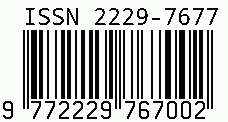
International Journal on Science and Technology
E-ISSN: 2229-7677
•
Impact Factor: 9.88
A Widely Indexed Open Access Peer Reviewed Multidisciplinary Bi-monthly Scholarly International Journal
Plagiarism is checked by the leading plagiarism checker
Call for Paper
Volume 16 Issue 3
July-September 2025
Indexing Partners



















Real-Life Skin Impedance Variations with Dry and Wet Electrodes for Bio-Potential Signal Acquisition
| Author(s) | Rajshaker Kankula |
|---|---|
| Country | United States |
| Abstract | Capturing bio-potential signals such as electrocardiograms (ECGs), electromyograms (EMGs), and electroencephalograms (EEGs) is essential for diagnosing and monitoring diverse physiological conditions, including cardiac arrhythmias, neuromuscular disorders, and brain activity. These signals reflect real-time electrophysiological states, enabling timely detection and management of critical medical conditions. Traditionally, Ag/AgCl wet electrodes with conductive gel provide superior signal quality by reducing skin-electrode impedance; however, their limitations such as gel drying, skin irritation, and short usability span hinder long-term and wearable applications. Dry electrodes offer advantages in comfort, biocompatibility, and long-term usability, but face challenges related to high and variable skin impedance, which impacts signal fidelity and analog front-end (AFE) circuit design. This study presents an empirical characterization of skin-electrode impedance using dry stainless-steel and wet (gel-mimicked) electrodes on the palmar surface of the thumbs in 15 adult subjects (age: 23–60 years). Impedance was measured at six logarithmically spaced frequencies 20 Hz, 100 Hz, 1 kHz, 10 kHz, 100 kHz, and 1 MHz and at two temporal intervals (5 seconds and 1-minute post-application). Results indicate significant differences in impedance magnitude and behavior across electrode types and frequencies. |
| Keywords | Skin impedance, Bio-potential signals, Dry electrodes, Wet electrodes, LCR Meter, Electrode-skin interface |
| Field | Engineering |
| Published In | Volume 16, Issue 2, April-June 2025 |
| Published On | 2025-05-07 |
| DOI | https://doi.org/10.71097/IJSAT.v16.i2.4682 |
| Short DOI | https://doi.org/g9hsp2 |
Share this


CrossRef DOI is assigned to each research paper published in our journal.
IJSAT DOI prefix is
10.71097/IJSAT
Downloads
All research papers published on this website are licensed under Creative Commons Attribution-ShareAlike 4.0 International License, and all rights belong to their respective authors/researchers.

